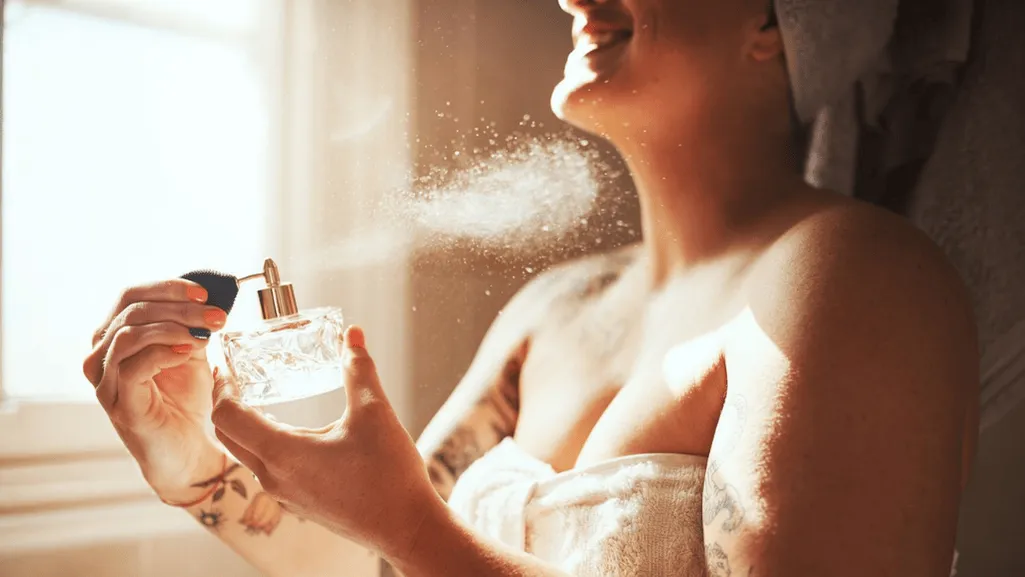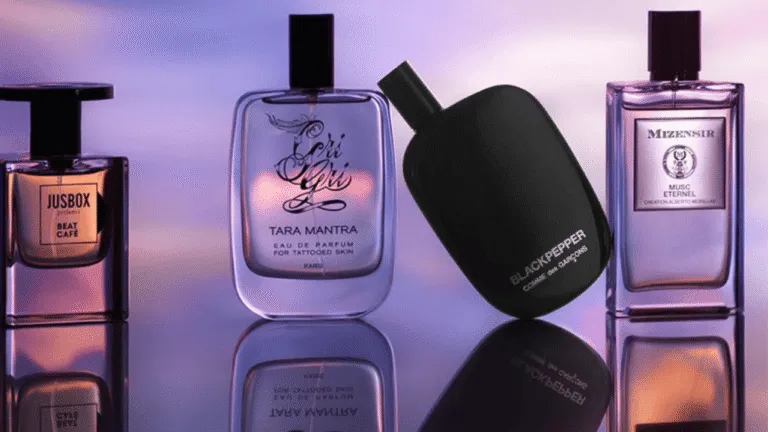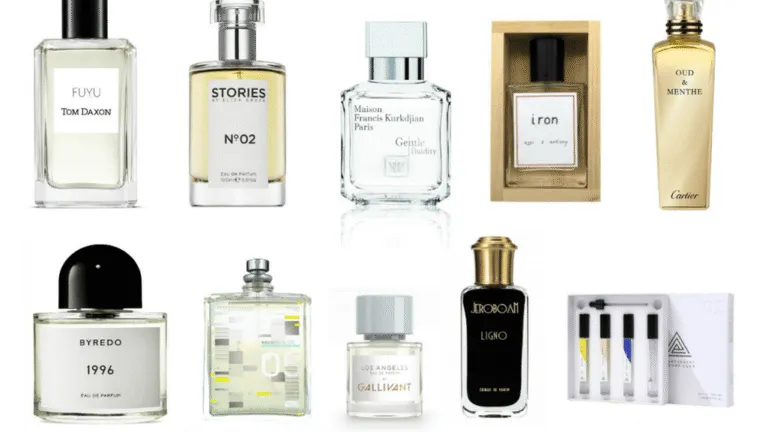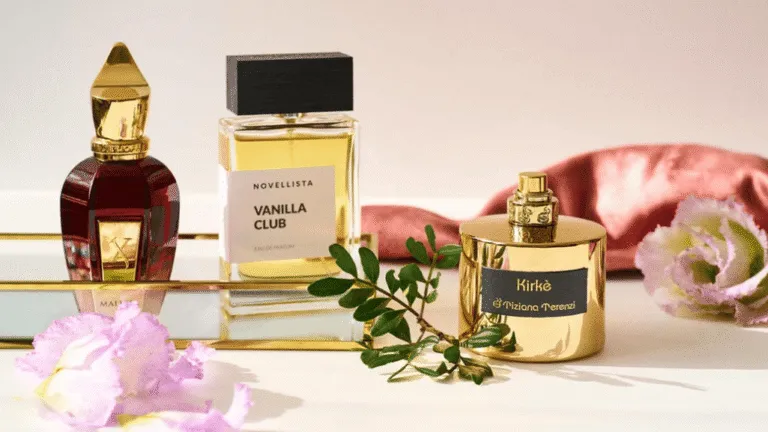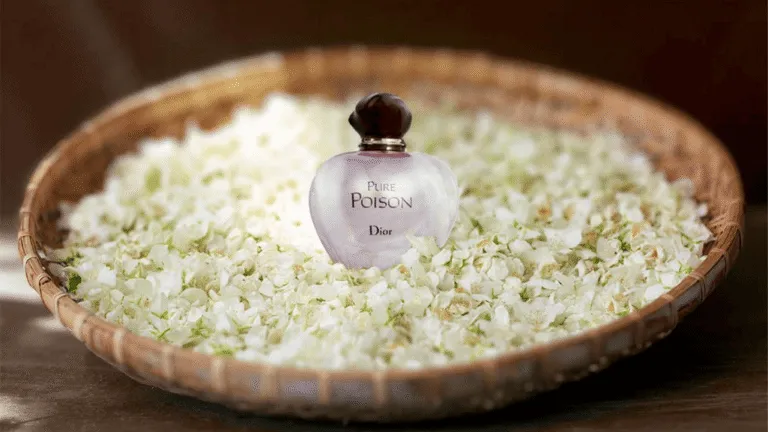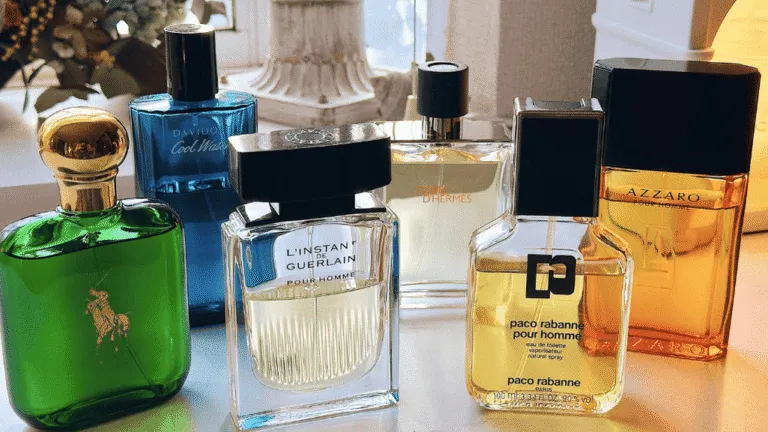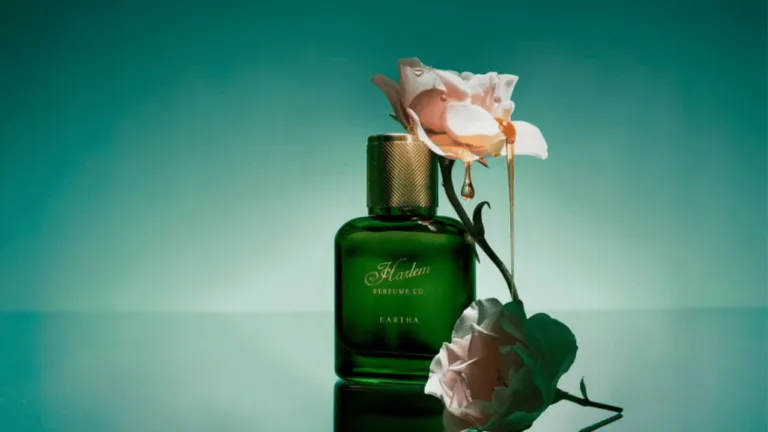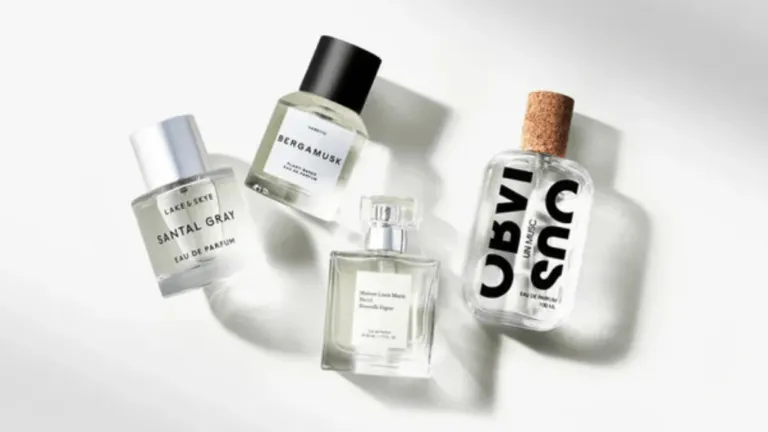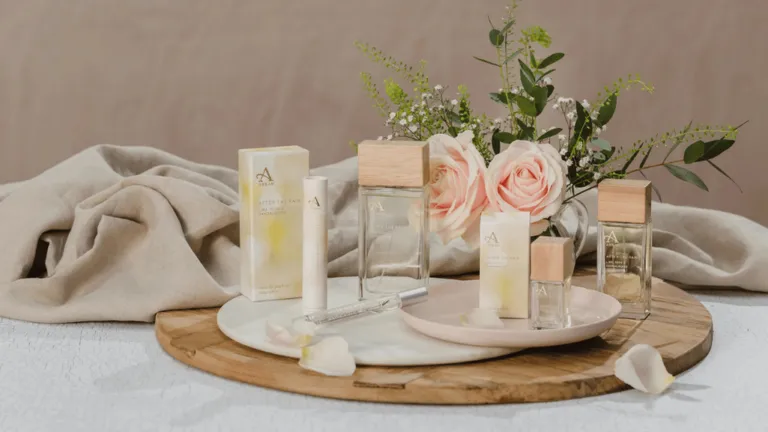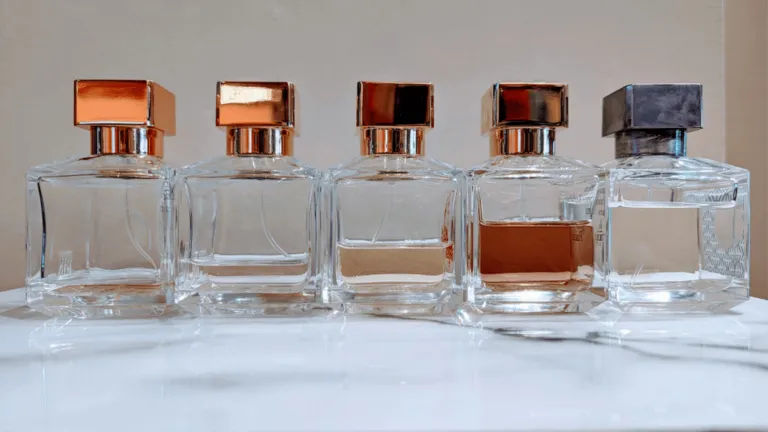Welcome to the world of Eau de Parfum, where What does eau de parfum mean, and the meaning behind “parfum” come together to create an olfactory journey like no other. In this article, we will unravel the secrets of Eau de Parfum, exploring its origins, characteristics, and how it stands out in the realm of perfumery. Whether you’re a fragrance enthusiast or simply curious about the allure of scents, this guide will enlighten you on the captivating world of Eau de Parfum.
Key Takeaways
- Eau de Parfum boasts a higher concentration of aromatic oils, resulting in a richer and longer-lasting scent experience.
- It sits between Eau de Toilette and Parfum in terms of fragrance strength and concentration.
- Eau de Parfum is associated with luxury and elegance and originated in Grasse, France.
- It offers variations such as Eau de Parfum Intense and Eau de Parfum Extreme for intensified experiences.
- Eau de Parfum is available in various formats, including spray bottles, roll-on applicators, solid perfumes, and infused body lotions.
Fragrance Intensity: Eau de Parfum vs. Eau de Toilette
When it comes to fragrance, the intensity of the scent is an important consideration. Eau de Parfum and Eau de Toilette are two popular fragrance concentrations, each offering a unique olfactory experience.
Eau de Parfum, often abbreviated as EDP, has a higher concentration of aromatic oils, typically ranging from 15% to 20%. This higher concentration results in a stronger and longer-lasting scent. Eau de Parfum is known for its rich and luxurious character, making it an excellent choice for special occasions and evening wear.
On the other hand, Eau de Toilette, commonly abbreviated as EDT, has a lower concentration of aromatic oils, usually ranging from 5% to 15%. This lower concentration offers a lighter and more subtle fragrance experience. Eau de Toilette is often preferred for daily wear or warmer climates, providing a refreshing and invigorating scent.
Fragrance Intensity Comparison
| Eau de Parfum | Eau de Toilette |
|---|---|
| Higher concentration of aromatic oils (15-20%) | Lower concentration of aromatic oils (5-15%) |
| Rich and long-lasting scent | Light and subtle fragrance |
| Suitable for special occasions and evening wear | Ideal for daily wear and warmer climates |
Choosing between Eau de Parfum and Eau de Toilette ultimately depends on personal preference and the desired intensity of the fragrance. Eau de Parfum offers a more pronounced and enduring scent, while Eau de Toilette provides a lighter and more refreshing experience.
Decoding Fragrance Notes: The Essence of Eau de Parfum
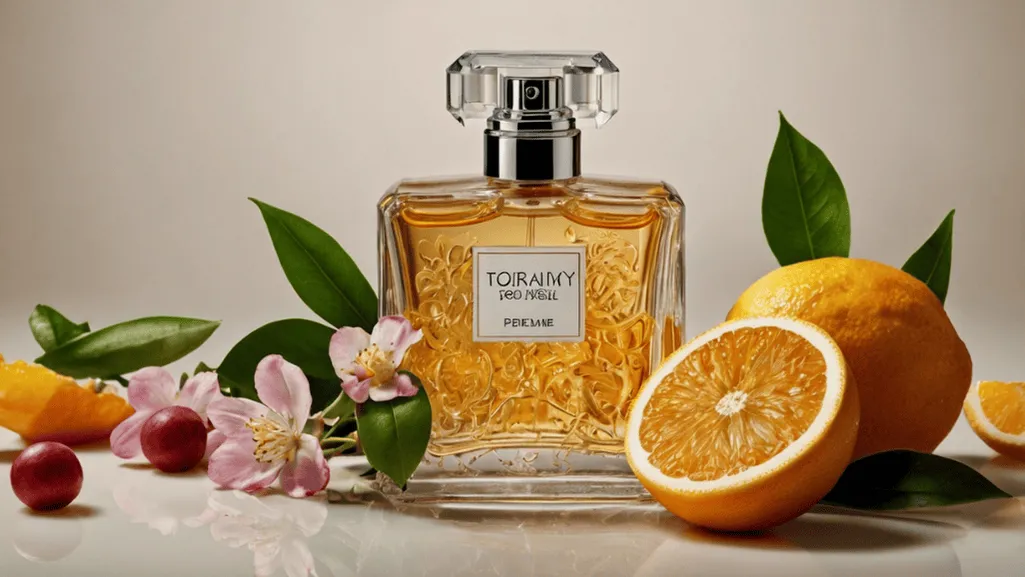
Eau de Parfum is composed of different fragrance notes that come together to create a captivating and unique scent experience. Understanding these fragrance notes and how they interact is key to appreciating the allure and character of Eau de Parfum.
Fragrance Notes Categorized
The fragrance notes in Eau de Parfum can be categorized into three layers: top notes, heart notes, and base notes.
| Layer | Description |
|---|---|
| Top Notes | The initial burst of scent that greets the senses, **fragrance notes** such as zesty citrus, invigorating herbs, and aromatic spices. |
| Heart Notes | Unfolding as the top notes dissipate, **perfume terminology** heart notes form the heart and soul of the fragrance. They often consist of floral bouquets, delicate fruits, and nuanced spices. |
| Base Notes | Provide **parfum meaning** depth and longevity to the fragrance. They include rich woods, sensual musks, and comforting resins. |
The combination and harmonious blend of these fragrance notes give each Eau de Parfum its own unique identity and character. The top notes create the first impression, while the heart and base notes develop and linger on the skin, ensuring a captivating and long-lasting scent experience.
Exploring Fragrance Terminology
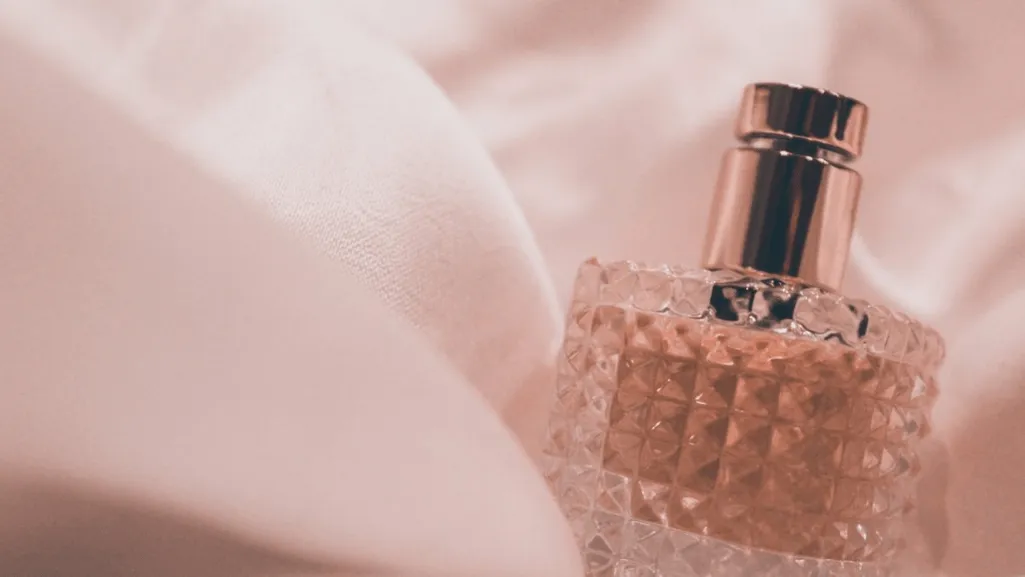 Exploring fragrance notes reveals the depth of artistry and craftsmanship that goes into creating Eau de Parfum. Fragrance notes are carefully selected to evoke specific emotions, memories, and sensations. By understanding the various terms used to describe fragrance notes, you can better appreciate the magnificent complexity of Eau de Parfum.
Exploring fragrance notes reveals the depth of artistry and craftsmanship that goes into creating Eau de Parfum. Fragrance notes are carefully selected to evoke specific emotions, memories, and sensations. By understanding the various terms used to describe fragrance notes, you can better appreciate the magnificent complexity of Eau de Parfum.
- Top notes: The initial burst of scent, also known as the opening notes, are the most volatile and tend to fade quickly.
- Heart notes: Also referred to as the middle or body notes, these come after the top notes and give the fragrance its core identity.
- Base notes: The final stage of fragrance development, these notes form the foundation and provide depth and longevity to the scent.
Fragrance Notes: Key Elements in Perfume Creation
The art of deciphering fragrance notes becomes a personal journey, where individuals develop their own preferences and associations with certain scents. By understanding fragrance notes, perfume terminology, and the **parfum meaning**, you can unlock the essence of Eau de Parfum and explore the diverse world of fragrances.
Selecting the Perfect Eau de Parfum: Understanding Fragrance Families
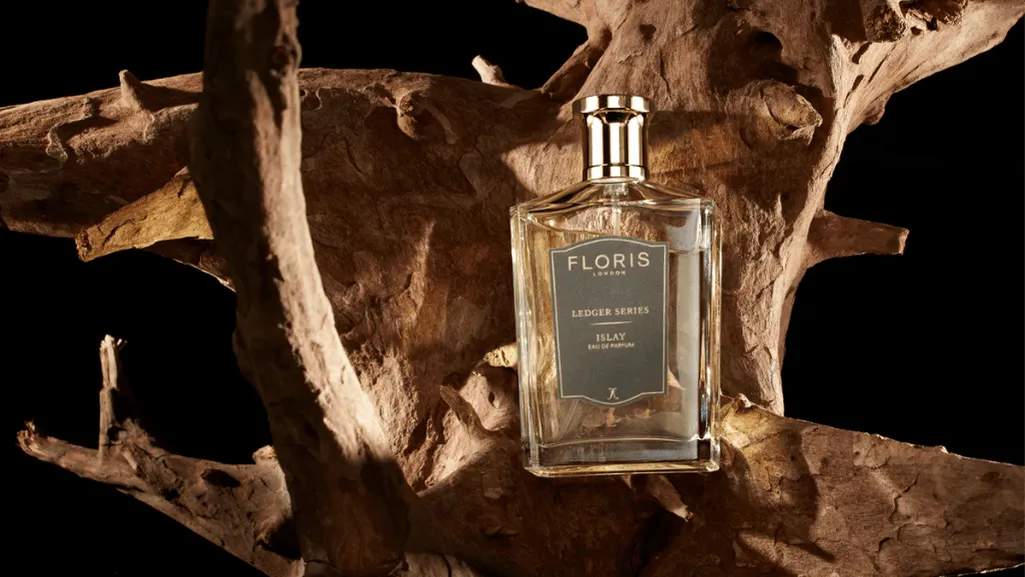
Choosing the perfect Eau de Parfum involves understanding fragrance families. Fragrances are categorized into different families, such as floral, oriental, woody, and fresh. Each fragrance family has its own unique characteristics and notes that define its aroma and style.
Floral Fragrances
Floral scents are characterized by elegant floral notes like rose, jasmine, or lily. These fragrances capture the essence of blooming flowers, creating a romantic and feminine aura. Floral Eau de Parfums are perfect for those who seek a delicate and enchanting scent.
Oriental Fragrances
Oriental fragrances are warm and sensual, often combining exotic spices and resins. These fragrances evoke a sense of mystery and allure, with notes like vanilla, patchouli, and amber. Oriental Eau de Parfums are ideal for those who desire a captivating and seductive scent.
Woody Fragrances
Woody fragrances feature earthy and woody notes, creating a sense of warmth and sophistication. These fragrances often include ingredients like sandalwood, cedar, and vetiver. Woody Eau de Parfums evoke a natural and elegant charm, making them a popular choice for both men and women.
Fresh Fragrances
Fresh fragrances evoke a clean and invigorating feeling, capturing the essence of nature and the great outdoors. These fragrances often contain citrus, aquatic, or green notes, providing a refreshing and energetic scent. Fresh Eau de Parfums are perfect for those who prefer a light and revitalizing fragrance.
Understanding the different fragrance families can help in selecting an Eau de Parfum that resonates with individual preferences and styles. Whether you’re drawn to the romance of floral scents, the allure of oriental fragrances, the sophistication of woody notes, or the freshness of citrus and green accords, there’s an Eau de Parfum waiting to enhance your personal scent journey.
Applying and Maintaining Eau de Parfum: Art and Care
Applying Eau de Parfum is an art in itself. To make the most of its enticing fragrance, it’s important to understand the proper technique and ensure optimal storage. Here are some tips to help you apply and maintain your Eau de Parfum:
1. Perfume Application:
When applying Eau de Parfum, it’s best to focus on pulse points on your body. These areas naturally emit heat, intensifying the scent and allowing it to disperse more effectively. The key pulse points include:
- Wrists
- Neck
- Behind the ears
Apply the fragrance with a gentle spritz on these areas, allowing the scent to envelop you throughout the day. Remember, a little goes a long way with Eau de Parfum. Its strong sillage and longevity mean that just a few sprays can create a captivating aura without overpowering the senses.
2. Perfume Storage:
Maintaining Eau de Parfum’s integrity is crucial to preserve its quality over time. Follow these storage tips:
- Keep it in a cool, dark place: Direct sunlight and extreme temperatures can degrade the fragrance oils. Choose a location away from windows or heat sources.
- Avoid humid environments: High humidity can alter the fragrance composition and affect its performance. Select a storage spot with low humidity.
- Keep the original packaging: The bottle and packaging help protect the Eau de Parfum from light exposure and temperature fluctuations. Storing it in the original box adds an extra layer of sophistication and care.
By adhering to these simple practices, you can ensure that your Eau de Parfum maintains its allure and delivers an exquisite fragrance experience every time.
Perfume Application and Storage Summary:
| Perfume Application | Perfume Storage |
|---|---|
| Apply Eau de Parfum to pulse points | Store in a cool, dark place |
| Use a gentle spritz | Avoid direct sunlight and extreme temperatures |
| Apply in moderation | Avoid humid environments |
| Focus on wrists, neck, and behind the ears | Keep the original packaging |
By following these tips, you can enhance your fragrance application technique and prolong the lifespan of your beloved Eau de Parfum. Experience the art and care it takes to embrace the scented masterpiece.
Fragrance Levels Explained: Understanding Concentration
Fragrance levels play a crucial role in determining the intensity and longevity of a perfume. Understanding the concentration of perfume oil in different fragrance types can help you make an informed choice when selecting the perfect scent.
Eau de Parfum (EDP) typically contains between 15-20% perfume oil, making it a highly concentrated fragrance option. This higher concentration results in a richer and longer-lasting scent experience. Eau de Parfum is perfect for those who prefer a more pronounced and captivating fragrance presence.
Eau de Toilette (EDT) has a lower concentration of perfume oil, usually ranging from 5-15%. It offers a lighter and more subtle fragrance experience compared to Eau de Parfum. EDT is a popular choice for everyday wear and warmer climates, as it provides a refreshing and invigorating scent that doesn’t overpower.
Extrait de Parfum, also known as pure perfume, boasts the highest concentration of perfume oil. It typically contains between 20-40% perfume oil, resulting in an incredibly potent and long-lasting fragrance experience. Extrait de Parfum is a luxurious option, perfect for special occasions or those who prefer a luxurious and indulgent scent.
Perfume oils are also worth mentioning when discussing fragrance concentration. These oils blend fragranced oil with unscented oil, allowing you to customize and personalize your scent. Perfume oils provide a long-lasting and intense fragrance experience, allowing you to enjoy your favorite scent for an extended period.
Fragrance Levels Comparison:
| Concentration Level | Perfume Type | Perfume Oil Content |
|---|---|---|
| Eau de Parfum (EDP) | 15-20% | High |
| Eau de Toilette (EDT) | 5-15% | Medium |
| Extrait de Parfum | 20-40% | High |
| Perfume Oils | Varies | Customizable |
The concentration level of a fragrance significantly impacts its longevity, projection, and sillage. Higher concentrations tend to provide a more intense and long-lasting scent, while lower concentrations offer a lighter and more subtle fragrance presence. Consider your personal preferences and the occasion when selecting an Eau de Parfum with the perfect fragrance concentration for you.
The Enduring Allure of Eau de Parfum: A Scented Masterpiece
Eau de Parfum transcends the boundaries of a mere fragrance, embodying timelessness, elegance, and individual expression. Each exquisite bottle of Eau de Parfum encapsulates a rich heritage, artistic prowess, and personal emotions. It possesses an enduring allure that evokes deep emotions, stirs cherished memories, and unleashes vibrant dreams. The complexity and craftsmanship behind every blend of Eau de Parfum continue to captivate those who crave to enhance their aura and make an indelible statement through scent. It is a scented legacy that resonates with all who encounter it, leaving an indelible mark on their olfactory journey.
Conclusion
Eau de Parfum is the perfect balance between Eau de Toilette and Parfum, offering a captivating and long-lasting fragrance experience. With its higher concentration of aromatic oils, typically around 15-20%, Eau de Parfum enhances the richness and longevity of the scent. Its formulation is a intricate process that combines different fragrance notes, resulting in a fragrance that is layered and complex. The regional influences and varying fragrance families further contribute to the depth and character of Eau de Parfum.
To fully appreciate Eau de Parfum, it is important to understand the various fragrance families and their unique characteristics. This knowledge can help individuals choose a fragrance that resonates with their personal style and preferences. Furthermore, proper application and storage techniques are essential for maintaining the integrity of the fragrance. Applying Eau de Parfum to pulse points and storing it in a cool, dark place can ensure its longevity and freshness.
The concentration level of a fragrance determines its intensity, and Eau de Parfum strikes the perfect balance. With its balanced and captivating experience, Eau de Parfum allows individuals to express their unique personality through scent. Its enduring allure transcends time, making it a scented masterpiece that leaves a lasting impression. Whether it’s for special occasions or everyday wear, Eau de Parfum brings elegance, sophistication, and individuality to those who wear it.
FAQ
What does eau de parfum mean?
Eau de Parfum (EDP) is a type of fragrance concentration that sits between Eau de Toilette (EDT) and Parfum (extrait de parfum). It boasts a higher concentration of aromatic oils, usually around 15-20%, which results in a richer and longer-lasting scent.
How does eau de parfum compare to eau de toilette?
Eau de Parfum has a higher concentration of fragrance oils, typically between 15-20%, while Eau de Toilette has a lower concentration, usually around 5-15%. Eau de Parfum is considered to have a richer and longer-lasting scent, making it suitable for special occasions and evening wear, while Eau de Toilette is lighter and more suitable for daily wear or warmer climates.
What are fragrance notes and how do they contribute to eau de parfum?
Fragrance notes are the different layers of scents that make up a fragrance. Eau de Parfum is composed of top notes, which are the initial burst of scent, heart notes, which form the heart and soul of the fragrance, and base notes, which provide depth and longevity to the scent. The combination and blend of these notes define the allure and character of Eau de Parfum.
How do I select the perfect eau de parfum?
Understanding fragrance families can help in selecting an Eau de Parfum that resonates with individual preferences and styles. Fragrances are categorized into different families, such as floral, oriental, woody, and fresh. Floral scents are characterized by elegant floral notes, oriental fragrances are warm and sensual, woody fragrances feature earthy and woody notes, and fresh fragrances evoke a clean and invigorating feeling.
How do I apply and maintain eau de parfum?
It is recommended to apply Eau de Parfum to pulse points, such as the wrists, neck, and behind the ears, as these areas emit heat and intensify the scent. Eau de Parfum has strong sillage and longevity, so it’s important to use it in moderation to avoid overpowering the senses. Proper storage in a cool, dark place away from direct sunlight and extreme temperatures is also crucial to preserve the integrity of the fragrance.
What are fragrance levels and how do they affect eau de parfum?
Fragrance levels indicate the concentration of perfume oil in a fragrance. Eau de Parfum typically contains between 15-20% perfume oil, while Eau de Toilette has a lower concentration of 5-15%. The concentration level affects the fragrance’s longevity, projection, and sillage.
What makes eau de parfum enduring and alluring?
Eau de Parfum represents timelessness, elegance, and individual expression. It has a lasting allure that evokes emotions, memories, and dreams. The complexity and craftsmanship behind Eau de Parfum continue to captivate individuals who seek to enhance their aura and make a statement through scent, leaving a scented legacy that resonates with those who encounter it.
What is the conclusion about eau de parfum and perfume concentrations?
Eau de Parfum is a fragrance concentration that offers a balanced and captivating experience. Its higher concentration of aromatic oils provides a richer and longer-lasting scent. Understanding perfume concentrations, fragrance families, and proper application and storage techniques are essential for selecting and maintaining Eau de Parfum.

